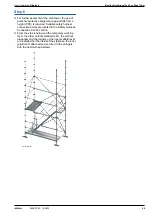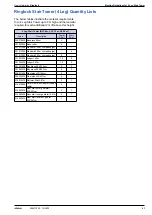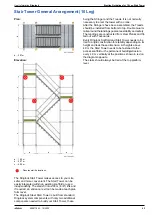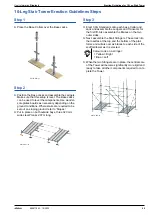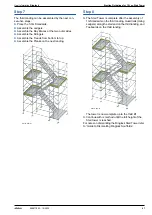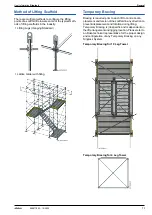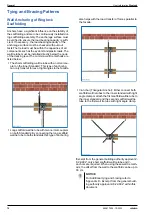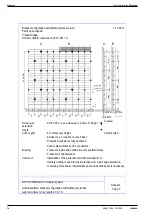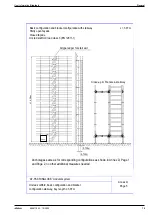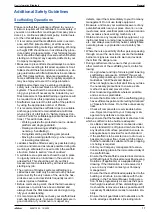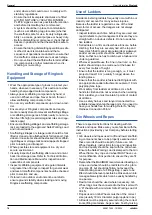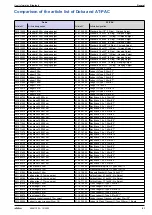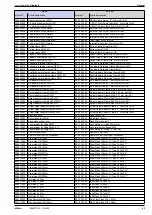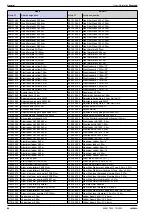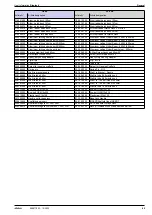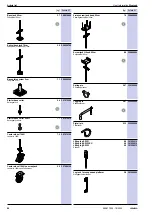
72
999817902 - 10/2022
General
User Information
Ringlock
Tying and Bracing Patterns
Wall Anchoring of Ringlock
Scaffolding
Anchors have a significant influence on the stability of
the scaffolding and are to be continuously installed dur-
ing scaffolding assembly.The anchorage surface must
be verified to ensure the load bearing capacity is suffi-
cient. If necessary , the load-bearing capacity of the
anchorage surface must be checked with pull-out
tests.The tie load must be within the capacities of all
components such as the eye bolt and plastic rawls. The
wall tie tube must be installed directly below the node
of the decking level.The common wall tie methods are
listed below:
▪
The short scaffolding wall tie tube with a normal cou-
pler on the inner Standard: This type of anchoring
can only transmit forces at right angles to the facade.
▪
Long scaffold wall tie tube with two normal couplers
on both Standards: By connecting the long scaffold
wall tie tube to both standards,this type of anchoring
also helps with the load transfer of forces parallel to
the facade.
▪
V-Anchor (Triangular Anchor): Either connect both
scaffold wall tie tubes to the inner standard with right
angle clamp or attach the first scaffold wall tie tube to
the inner standard and the second scaffold wall tie
tube to the first wall tie tube with right angle clamp.
'Excerpt from the general building authority approval Z-
8.22-992', only short scaffold wall tie tube and V-
anchors are required. When using these wall tie meth-
ods, the offset from the wall to the scaffold can be up to
30 cm.
NOTICE
For Additional tying and bracing refer to
'Appendix D - Excerpt from the general build-
ing authority approval Z-8.22-992' within this
document.


